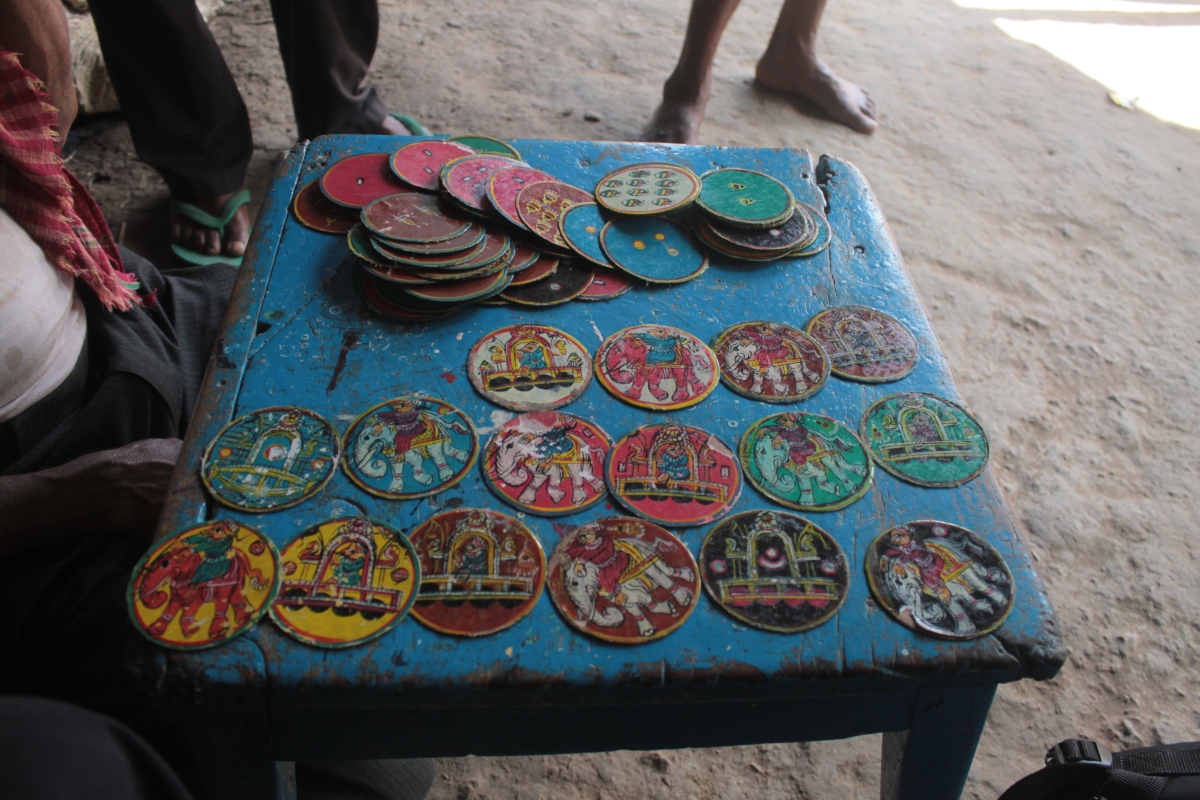In some corner of my heart, I have developed a special weakness for Khemundi, an erstwhile historic territory in South Odisha’s Ganjam and Gajapati Districts with Paralakhemundi as the capital. Here I was born close to 5 decades before in Chitrakara (Artisan) Street. Though I did not live here for longer stretch of times, I used to spend my childhood vacations twice a year spanning one and half months put together. As I recall my childhood days, Kumara Purnima or Sarad Purnima used to be a festival immediately after Dusshera when elderly folks of the town would play day and night a kind of circular pictorial card game, called sāra locally. Later, I came to know it is called Ganjifa or Ganjapā, a game introduced from Persia through Mughals in the 16th century, but now lost everywhere except Paralakhmundi’s cousin town Badakhmundi or Digapahandi in South Odisha’s Ganjam District (25 km away) from Berhampur, the largest city of the region.
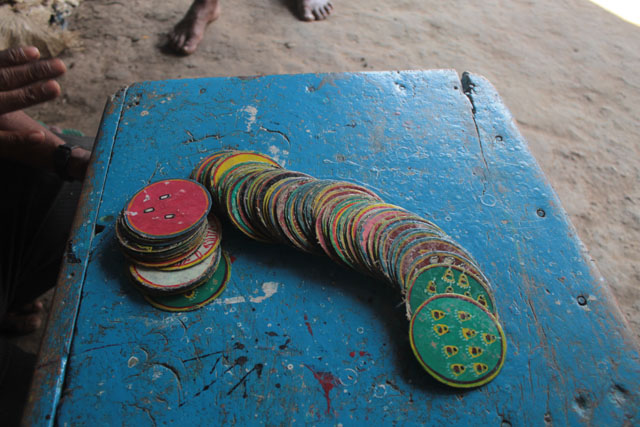

Asta Rangi Ganjapā Cards being played at Digapahandi
In the last 500 years of Digapahandi’s history, the region was blessed with diverse cultural influences. The influence of the Jagannath Cult of Puri had been its founding stone in the 16th century when a branch of Gajapati clan started ruling the Khemundi territory from Paralakhemundi.
Also, Read Here:
Monks, Monasteries and Murals – A Photo Story on Puri’s Two Legendary Mathas
Travel tips:
Digapahandi is a small town/large village located at a distance of 25 km from Berhampur, also the nearest Rail Station. The town is well connected from Berhampur by a motor road (the national highway that connects Gopalpur Port with Raipur, the capital of Chhatisgarh). A drive through the highway and the surrounding countryside is very scenic with hills, paddy fields, water bodies and colourful villages. Beyond Digapahandi starts the Ghat Road of Eastern Ghats. Another 25 km drive from Digapahandi is Taptapani, a natural hot spring surrounded by dense forests, hills and Saora tribal villages.
While at Digapahandi your resource person for Ganjifa cards is Shri Lakshmidhar Mahapatra (+91 9439135827).
Digapahandi does not have staying options. But if you are interested in forest and tribes, try for Panthanivas (Odisha Tourism) http://www.panthanivas.com/ at Taptapani. Otherwise, you can find plenty of options at Berhampur or Gopalpur-on-Sea.

Lord Jagannath, Balabhadra and Goddess Subhadra in the Sanctum Sanctorium of the Jagannath Temple within the premise of the ruined palace
 Sarathi
Sarathi

Lord Gopala and Goddess Radha
The last independent king of Odisha was Telenga Mukunda Deva (1559 – 68 CE). During his reign, Paralakhemundi was separated from the Old Khemundi state. Due to the fact that the Old Khemundi state was divided into three parts between the two sons of Swarnalinga Bhanu, the elder brother Ramachandra became the king of Badakhemundi and Sanakhemundi, while the younger son Subhalinga Bhanu became the king of Paralakhemundi State. So Badakhemundi and Sanakhemundi have always had a relationship with the Parala State, the place of my birth. After the death of Mukunda Deva, the region was briefly occupied by the Qutbshahis of Golkonda who were defeated by Mughals subsequently. The region was also under the Maratha domain for sometime before it was subjugated to the rule of East India Company in the early 19th century.
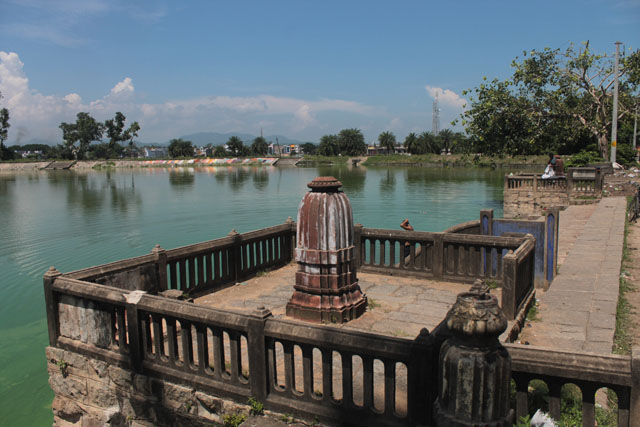
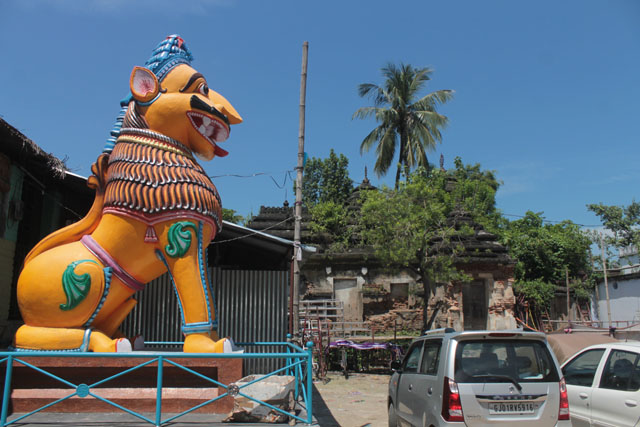

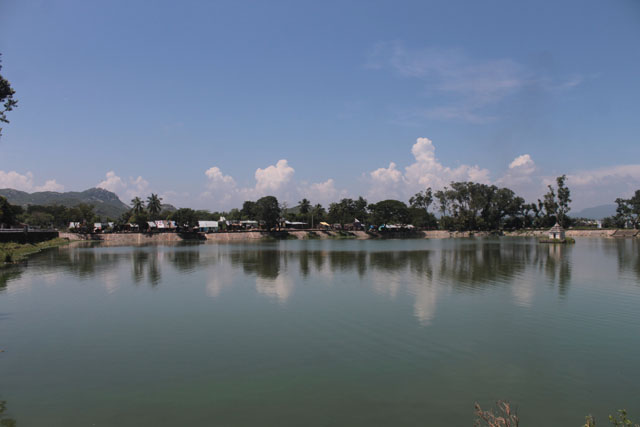
The Ruined Palace and the Tank
Ganjifā cards game was perhaps introduced here through the Mughals as there is no tradition of playing Dasavatara here, which is popular in Puri. Here 8 colours (Atha Rangi) or 8 suits cards is traditionally played.


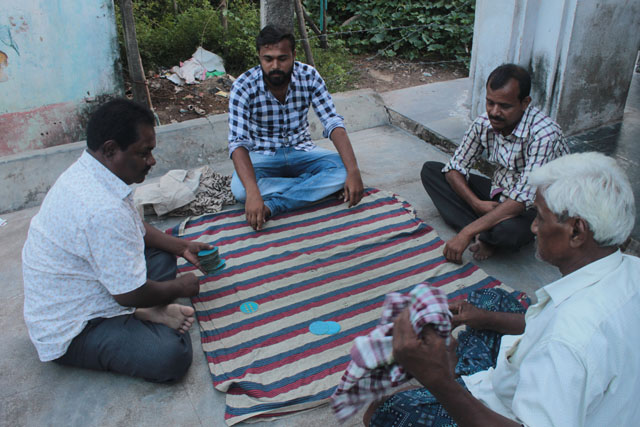
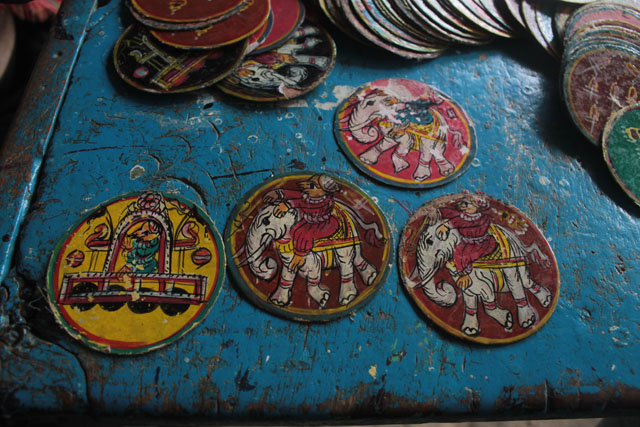
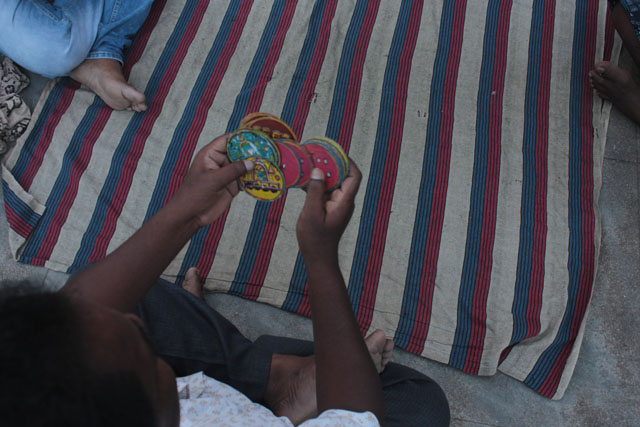

8 suits cards had been initiated by Emperor Akbar. These were Ghulam (servant), Taj (crown), Shamsher (sword), Asharfi (Gold Coin), Chang (harp), Barat (Document), Tanka (Silver Coin) and Gimah (merchandise). In Digapahandi packs, one finds close resemble with the Mughal names, such as Gulama (Mughal: Ghulam). Chenga (Mughal: Chang), Someswara (Mughal: Shamsher) and Barata (Mughal: Barat). The other four colours are Surjya (Sun), Chandra (moon), Phula (flower) and Kumancha. Besides Ganjapā, there are three other games played traditionally at Digapahandi, which are explained by the players in the film here.
Digapahandi was also a thriving centre of art and culture during its heydays. However, most of its tangible heritage is lost with the ravage of time.


In Ganjam, a type of murals incorporating ideas from South and Puri had developed known by Dakshini style of murals. In one of the recent stories, we had highlighted the murals of Biranchi Narayan Temple at Buguda. The erstwhile kings of Digapahandi also had commissioned similar work in the 19th century at its mutts and temples. One can still find their traces adorning the walls of its crumbling temples.
Also, Read Here:
Illustrating Ramayana Katha – Biranchi Narayan Temple at Buguda
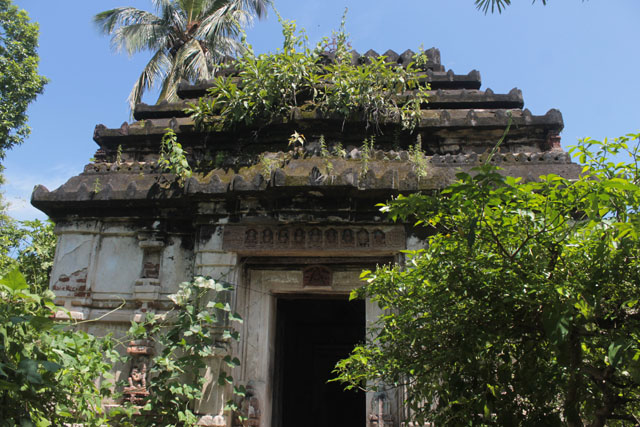
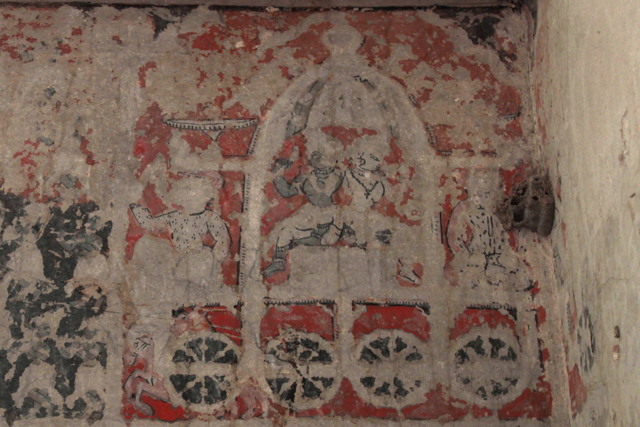


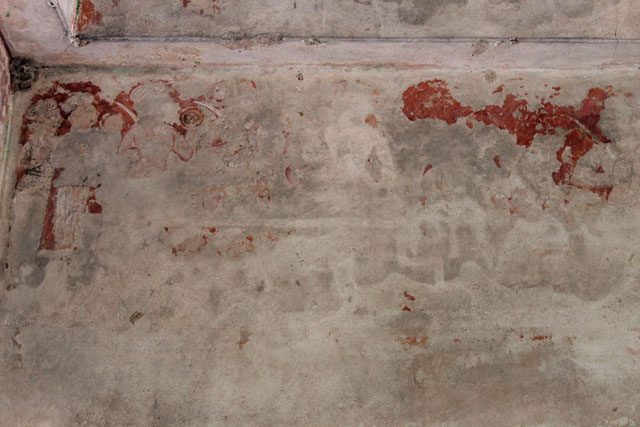
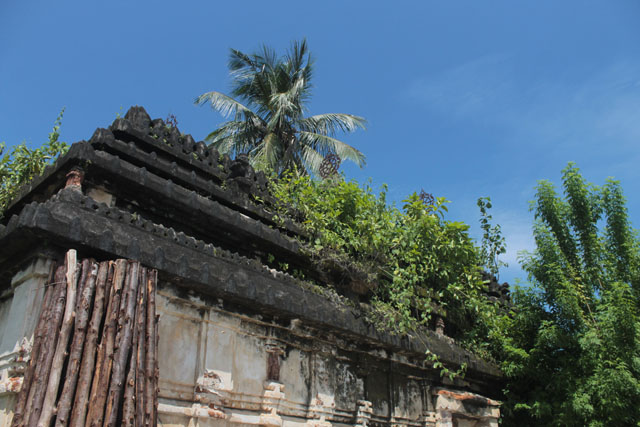
The ruined Jagannath Temple and traces of murals that once covered its walls profusely
Another interesting aspect of Digapahandi’s cultural heritage is Osakothi murals that one finds on walls of temples and sacred spaces, freshly painted during Navaratra every year. Osa meaning penance and kothi meaning sacred space, Osakothi represents the shrine where Osakothi rituals take place. The Osa fasting is carried out by women for the welfare and longevity of their husbands and families. The paintings are solely done by men. A folktale goes, a beautiful woman Shriya whose seven sons were killed by a jealous queen. However, she was blessed by goddess Mangala upon observing Osa for 12 years with seven more sons and everything that she desired. Since then it became a custom to observe Osa for prosperity and well being of a woman’s family.

In an Osakothi shrine what draws your attention is more than life-size images of Goddess Durga, Kali, Shiva, Chhinnamasta, Parvati, Saraswati, Ganga, Yamuna and a number of folk deities. One also finds scenes from Ramayana and Mahabharata as well as warriors, birds, animals and other floral designs. Be there between Dussehara and Kartik Purnima to witness Osakothi rituals, where you can find elements of tribal, folk and Hindu beliefs and practices.
Also, Read Here:
Osakothi Rituals in Ganjam – An Anthropological Journey


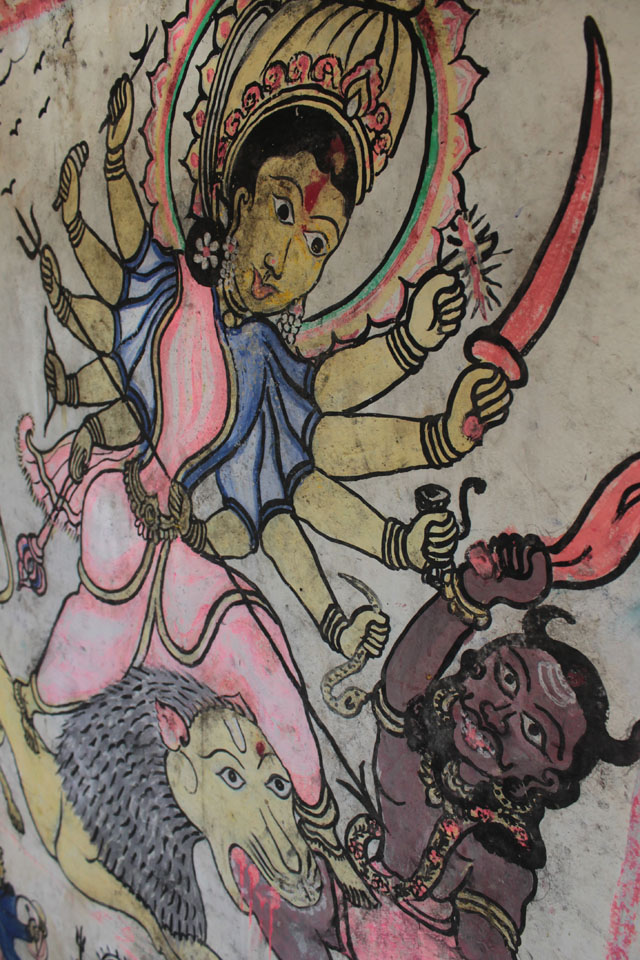

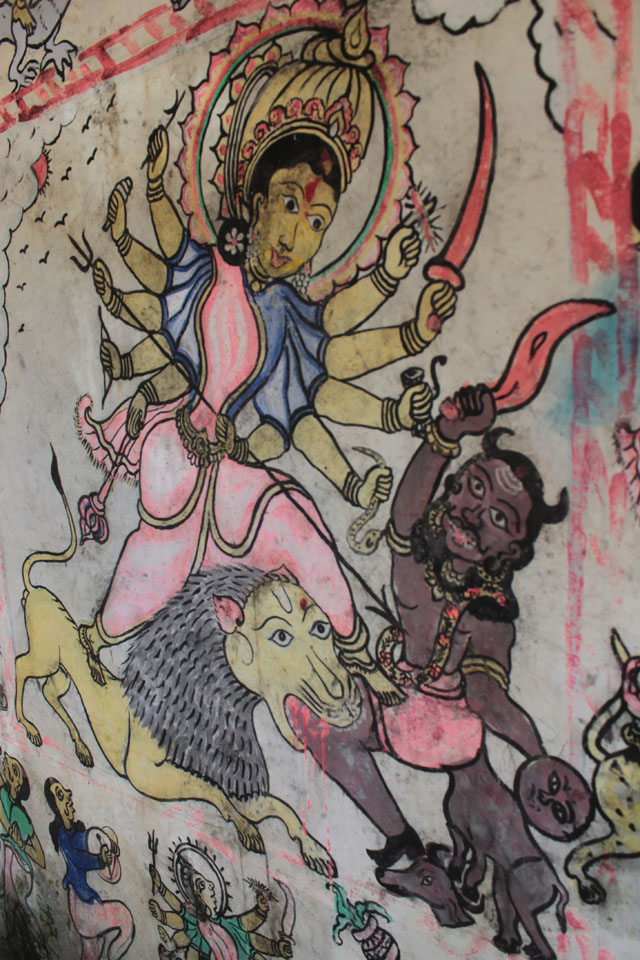
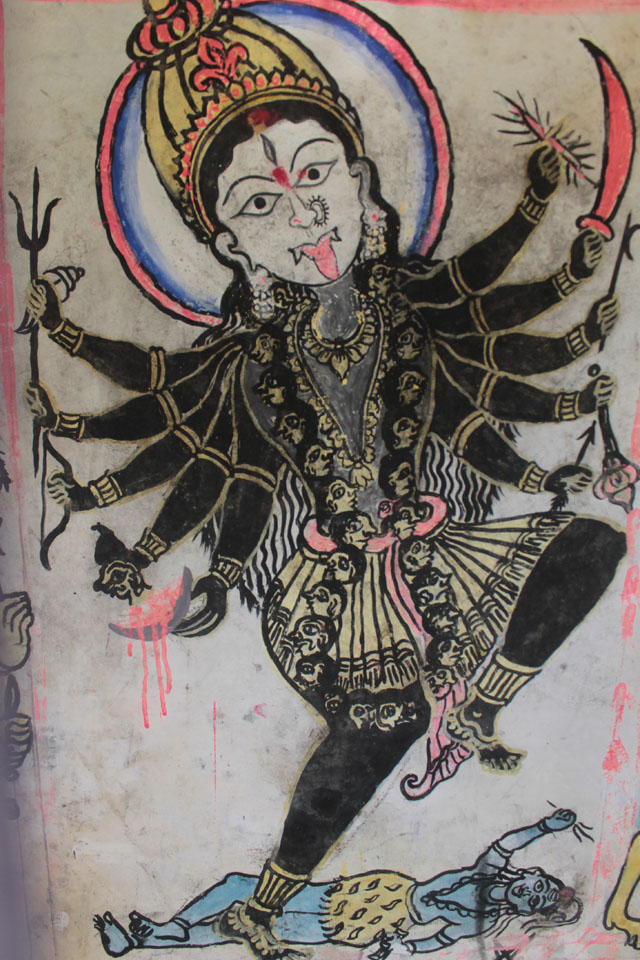
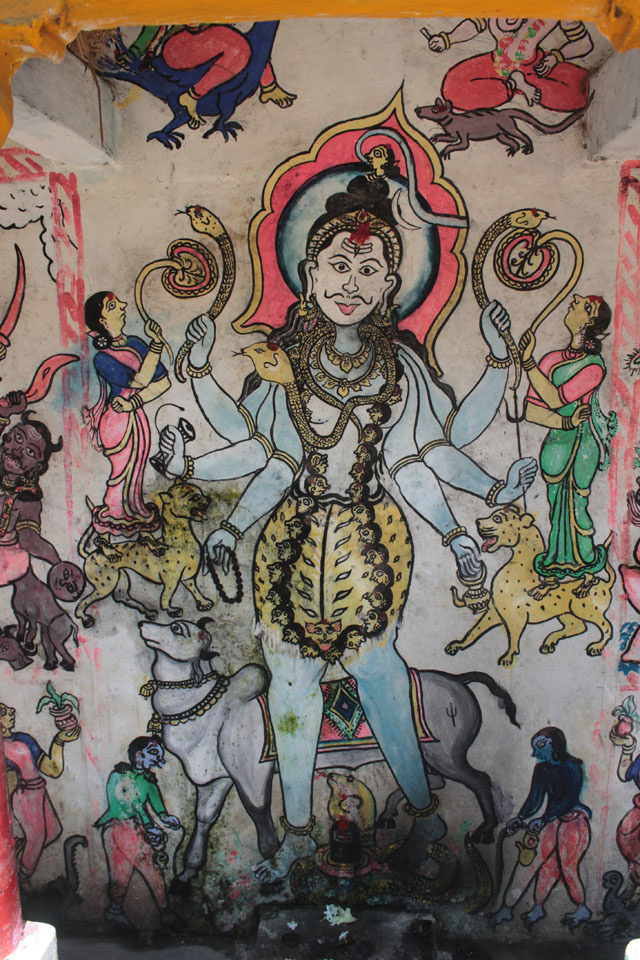
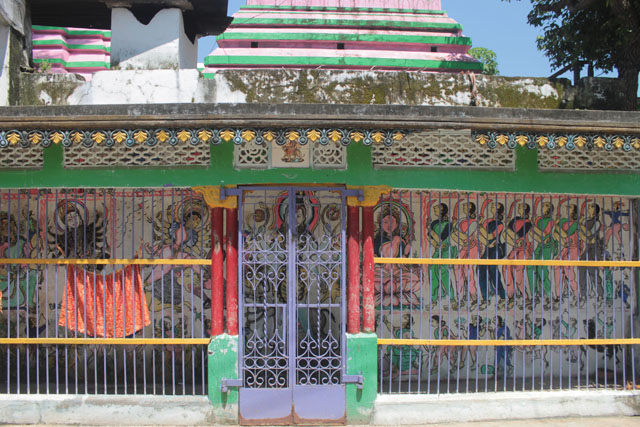

Digapahandi and its rural heartland are frozen in time. Little wonders it is also the gateway to South Odisha’s tribal territory, especially of Saoras and Kondhs. You discover miles and miles of paddy fields that appear in monsoon and during Durga Puja as fields of emerald. At distance, there are hills of Eastern Ghats.
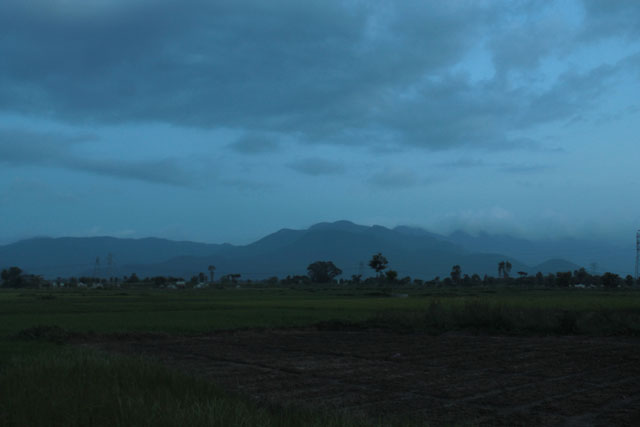

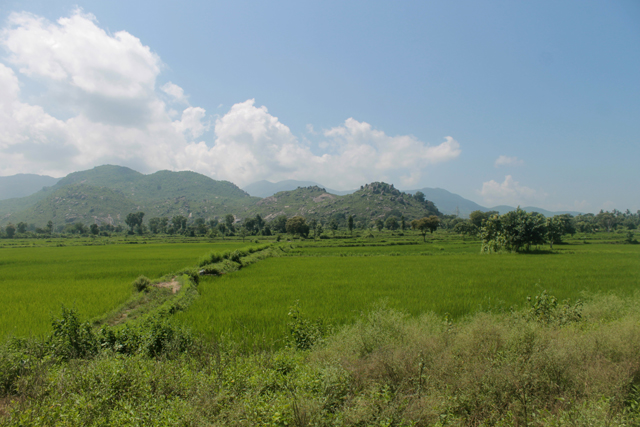
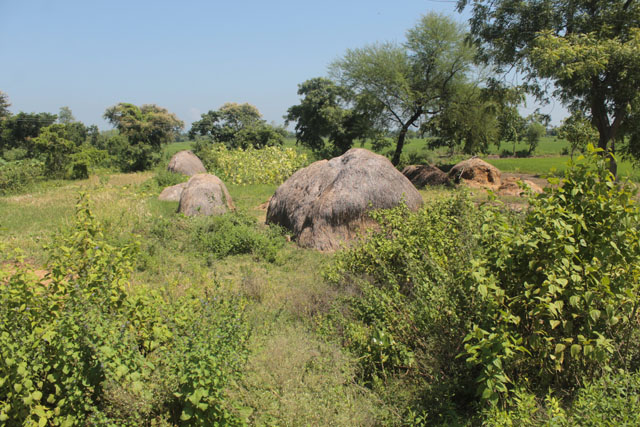
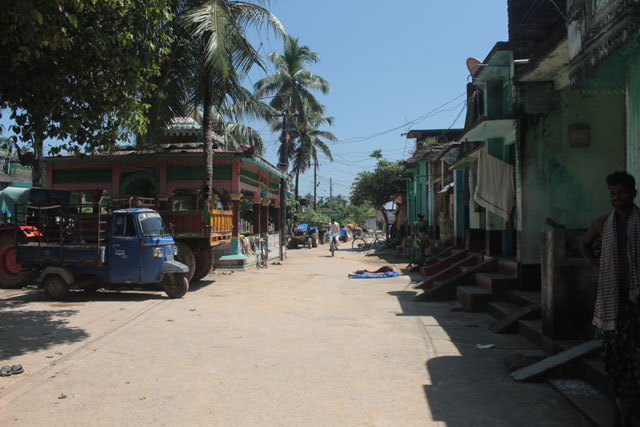
Though its immediate surroundings do not have a significant tribal population, there are a few hamlets here and there of Sabara tribe, once hunter gathers into subsistence farmers. They also entertain you through their soulful devotional music using an ethnic musical instrument called kenadarā.
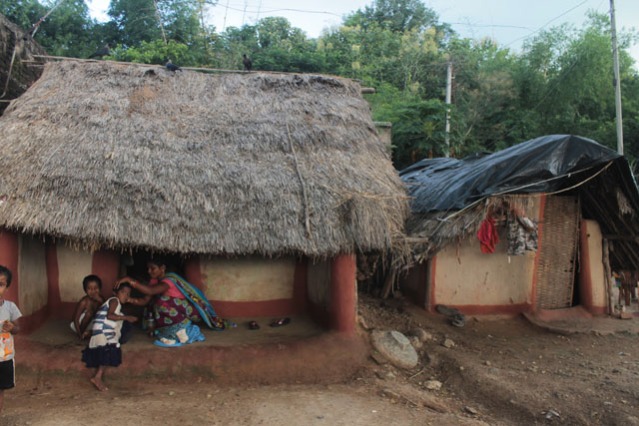
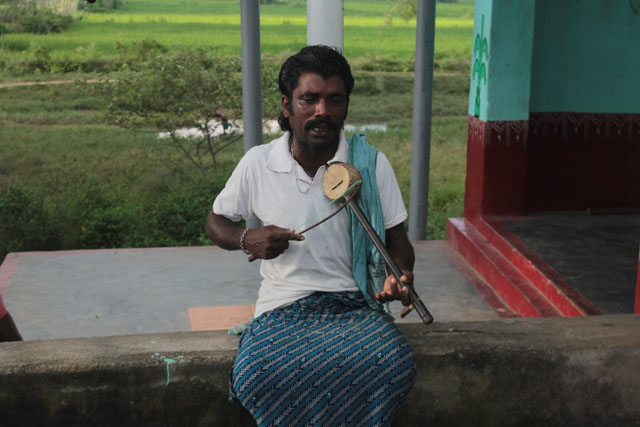

Author – Jitu Mishra
He can be contacted at jitumisra@gmail.com
